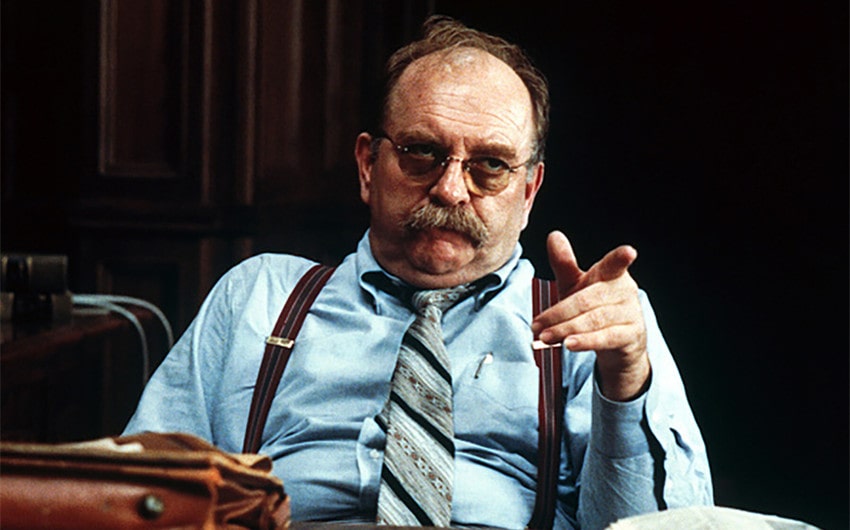Wilford Brimley’s Cocoon age has become something of a pop culture curiosity. When audiences first saw the 1985 sci-fi drama about senior citizens discovering the fountain of youth, they assumed Brimley was well into his golden years. After all, he played one of the film’s aging retirees with such authenticity, gravitas, and visual presence that it seemed obvious: this was an older man portraying an older character. But here’s the twist that still fascinates fans to this day—Wilford Brimley was only 50 years old when Cocoon was released. That’s right, the actor who came to symbolize a generation of retirement-age wisdom hadn’t even qualified for AARP yet.
That revelation is more than just a quirky bit of Hollywood trivia. Brimley’s age at the time of Cocoon challenges long-held perceptions about aging, appearance, and media portrayal of “oldness.” It’s also spawned what fans lovingly call “The Brimley Line”—a meme-worthy age marker that has become a running joke across generations. So how did a then-50-year-old actor come to define what we think of as elderly on screen? Let’s look at how Wilford Brimley’s Cocoon age became a timeless cultural talking point.
The Premise of Cocoon: A Film About Growing Old
Released in 1985, Cocoon is a fantasy sci-fi drama directed by Ron Howard that tells the story of a group of Florida retirees who discover that their local swimming pool—occupied by alien cocoons—has life-restoring powers. The pool essentially becomes a fountain of youth, granting the elderly characters renewed strength, vitality, and libido. The story blends heartfelt emotion, science fiction, and comedy while exploring themes of aging, mortality, and rebirth.
Brimley played the role of Ben Luckett, one of the main retirees who comes into contact with the mysterious alien energy source. Alongside actors like Don Ameche, Hume Cronyn, and Jessica Tandy, Brimley helped anchor the film’s emotional tone with a performance that felt honest and grounded. His portrayal of a grandfatherly figure dealing with aging, love, and the possibility of second chances left a lasting impression on audiences.
What most people didn’t realize at the time was that unlike many of his co-stars, who were genuinely senior citizens, Brimley was just hitting 50—a milestone that, in the 1980s, was considered middle-aged, not elderly. Yet with his white hair, mustache, and naturally serious demeanor, he completely embodied the role of a man well past retirement.
Wilford Brimley’s Actual Age in Cocoon
To be specific, Wilford Brimley was born on September 27, 1934. Cocoon was released in June 1985, which means Brimley was 50 years and 9 months old when the film premiered. For reference, Tom Cruise hit the same age during the press tour for Mission: Impossible – Fallout, a film where he performed his own stunts and sprinted across rooftops.
This striking contrast in how Hollywood visualized a 50-year-old in 1985 versus how it does today is exactly what sparked decades of conversation about Wilford Brimley’s Cocoon age. He not only played someone who seemed 65 or 70—but was accepted as such by audiences and critics alike.
Even Brimley himself later joked about how his image solidified him as “old” before he actually was. While part of that is due to his prematurely aged appearance—he had gray hair and a commanding presence much younger than most—there’s also something broader at play: a cultural moment where age and identity were closely tied to physical appearance, not actual years lived.
The Birth of the “Brimley/Cocoon Line”
In internet circles, particularly on platforms like Twitter and Reddit, the term “The Brimley Line” was coined to highlight the moment when celebrities reach the same age Wilford Brimley was when Cocoon hit theaters. It’s become a tongue-in-cheek way of saying, “You’ve officially reached the Brimley stage of life.”
This humorous age marker has been used to compare countless celebrities—ranging from Dwayne “The Rock” Johnson to Jennifer Lopez—to Brimley’s 50-year-old milestone. The comparison is almost always visually jarring, as today’s stars often appear younger, fitter, and more stylized than the reserved, cardigan-wearing Brimley ever did.
The Brimley Line has even been celebrated on dedicated websites that track public figures who cross it, marking them with tongue-in-cheek badges and commentary. It has become a viral reference point that lives on in memes, late-night jokes, and age-related commentary across social media.
What’s fascinating is that this memeification of Brimley has transformed a serious performance into an age-based pop culture landmark. While many actors would shy away from being seen as the “poster child” for aging, Brimley leaned into it—and as a result, earned even more love and respect for his unintentional cultural contribution.
Aging in Hollywood: Then vs. Now
The contrast between Brimley’s version of 50 and what 50 looks like in 2025 is one of the most striking revelations of this story. In the 1980s, 50 was often portrayed as the beginning of the end—particularly for men. Once you reached the half-century mark, you were cast as the wise elder, the retiree, or the fading patriarch.
Today, things are dramatically different. Modern 50-somethings in Hollywood are just as likely to be action stars, romantic leads, or startup founders. Think of actors like Keanu Reeves, Paul Rudd, or even Jennifer Aniston—people who not only continue to headline projects in midlife but are also admired for their physical fitness, fashion, and charisma.
Wilford Brimley’s Cocoon age serves as a cultural checkpoint showing just how much Hollywood—and society at large—has redefined what it means to age. In his day, simply having gray hair could mean a shift into “elderly” roles. Today, it’s just a style choice.
What also stands out is Brimley’s acceptance of that image. He wasn’t trying to be youthful or trendy. He embraced roles that suited him, even if they typecast him early. This authenticity made him a beloved character actor, especially in roles where wisdom, integrity, or no-nonsense authority were needed. From Cocoon to The Natural, and later his iconic Quaker Oats commercials and diabetes awareness PSAs, Brimley used that perceived age to build a brand of trustworthiness.
Featured Image Source: nytimes.com







